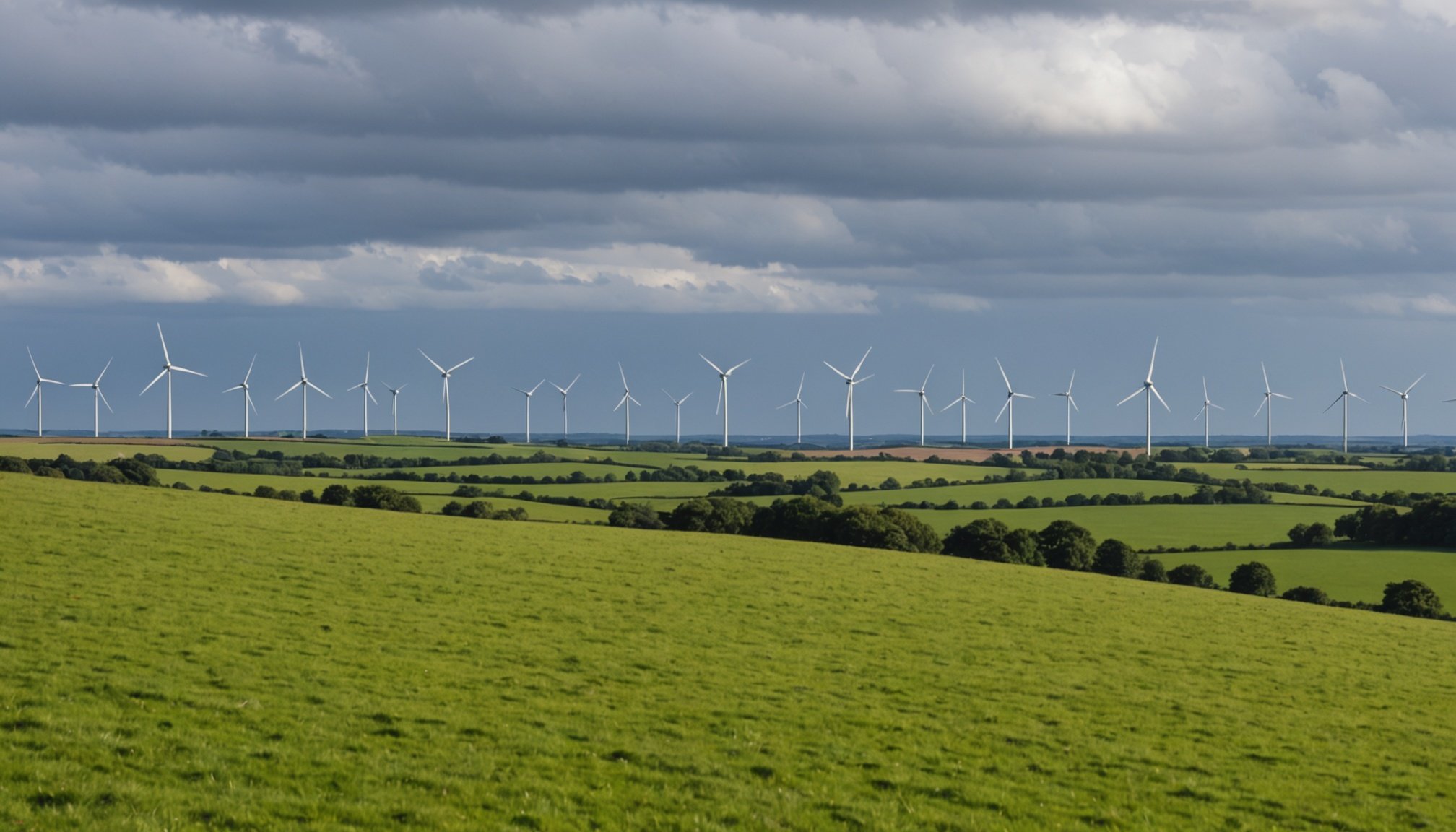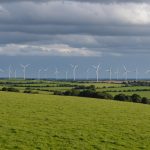As renewable energy efforts ramp up in the UK, wind farms are reshaping local ecosystems. One significant concern is the impact on nearby bat populations. These creatures play an essential role in pest control and pollination. Understanding how wind farms affect bat behavior and survival can inform better planning and conservation strategies. This exploration aims to illuminate the intersection of renewable energy advancement and wildlife preservation, ensuring that progress benefits both the environment and the communities within it.
Overview of Wind Farms in the UK
Wind farms are a pivotal component of the UK renewable energy landscape, contributing significantly to the nation's energy mix. The growth of wind energy in the UK has been remarkable, with substantial investments and technological advancements driving expansion.
A lire en complément : Exploring the Benefits and Drawbacks of the UK”s Badger Cull: A Comprehensive Analysis
Current Statistics:
- As of recent data, the UK hosts over 10,000 wind turbines.
- These installations collectively generate more than 24 gigawatts of electricity.
- Offshore wind farms contribute approximately 13 gigawatts, showcasing the UK's leadership in offshore wind energy.
The importance of renewable energy in achieving climate goals cannot be overstated. The UK has committed to reducing carbon emissions, and wind farms play a crucial role in this effort. By harnessing the power of the wind, the UK is not only reducing its reliance on fossil fuels but also setting a global example in sustainable energy practices.
A voir aussi : Exploring the Impact of New UK Hunting Regulations on the Safety of Foxes and Hares
A relevant quote from the UK Government's energy strategy states, "Wind farms are central to our vision for a sustainable and secure energy future." This underscores the strategic importance of wind energy in the national agenda.
The UK's renewable energy sector continues to innovate, ensuring that wind farms remain a cornerstone of the nation's climate strategy.
Understanding Bat Populations
Exploring the intricate world of bats and their ecological significance.
Overview of Bat Species in the UK
The UK is home to a diverse array of bat species, with 18 different species recorded. This diversity highlights the rich bat ecology present in the region. Among these, the pipistrelle bat is the most common, easily identifiable by its small size and agile flight. Other species include the noctule, known for its robust build, and the brown long-eared bat, recognized by its distinctive ears.
Role of Bats in the Ecosystem
Bats play a crucial role in maintaining ecological balance. They are essential for pest control, as they consume vast quantities of insects, including agricultural pests. This natural pest management underscores the importance of bat ecology in supporting sustainable agricultural practices. Moreover, bats are vital pollinators and seed dispersers, contributing to species diversity and the health of various ecosystems.
Current Trends in Bat Population Health
Recent studies indicate fluctuating trends in bat population health. While some species show signs of recovery, others face threats from habitat loss and climate change. Conservation efforts focus on protecting habitats and enhancing species diversity to ensure the resilience of bat populations. Continued research and monitoring are essential to support these efforts and maintain the ecological benefits bats provide.
Impact of Wind Farms on Bat Populations
Exploring the interactions between wind turbines and wildlife.
Direct Threats from Wind Turbine Collisions
Wind turbines pose significant direct threats to bat populations through collisions. Bats, often attracted by the motion of the blades or changes in air pressure, can suffer fatal injuries. Studies have shown varying bat mortality rates at different wind farms, with some locations reporting higher incidences of collisions. This highlights the need for effective mitigation strategies to protect these vital wildlife interactions.
Indirect Effects of Habitat Disruption
Beyond collisions, wind farms can indirectly impact bats by disrupting their natural habitats. The construction and operation of wind turbines may alter local ecosystems, affecting bat ecology and their foraging patterns. Such disruptions can lead to reduced species diversity and hinder the ecological roles bats play. Understanding these indirect effects is crucial for developing conservation measures that minimize habitat disruption.
Comparative Studies on Bat Mortality Rates
Research comparing bat mortality rates at various wind farms provides valuable insights into the extent of these impacts. These studies often reveal site-specific factors influencing mortality, such as turbine height and location. By analyzing these patterns, researchers can recommend targeted actions to mitigate the adverse effects of wind farms on bat populations.
"The challenge lies in balancing renewable energy development with wildlife conservation."
Scientific Studies on Bat Mortality
Analyzing the impact of wind farms on bat populations.
Key Research Findings on Bat Fatalities
Recent bat mortality studies have illuminated the significant impact of wind farms on bat populations. Research indicates that certain species are more susceptible to collisions, with fatalities often peaking during migration periods. A notable study found that bat fatalities were higher in areas with dense turbine installations, suggesting a correlation between turbine density and mortality rates.
Metrics Used to Assess Bat Populations
To gauge the impact of wind farms, scientists employ various metrics. These include bat mortality rates, which quantify fatalities per turbine per year, and acoustic monitoring, which tracks bat activity levels. The use of these metrics provides a comprehensive understanding of how wind farms affect bat populations over time.
Longitudinal Studies on the Impact of Wind Farms
Longitudinal studies are vital for assessing the long-term effects of wind farms. Such research often spans several years, offering insights into trends and changes in bat populations. A significant finding from these studies is the persistent decline in certain species, highlighting the need for ongoing monitoring and adaptive management strategies.
"Understanding the cumulative impact of wind energy on wildlife is essential for sustainable development."
Ecological Assessments of Wind Farm Sites
Evaluating the environmental impact before construction.
Importance of Pre-Construction Ecological Assessments
Conducting pre-construction ecological assessments is crucial for understanding the potential ecological impact of wind farms. These assessments help identify sensitive bat habitats and other wildlife concerns, allowing for informed decision-making. By analyzing site-specific conditions, developers can minimize negative interactions between wind farms and local ecosystems.
Tools and Methodologies for Assessing Bat Habitats
Various tools and methodologies are employed in ecological impact assessments to evaluate bat habitats. Techniques such as acoustic monitoring and habitat mapping provide valuable data on bat activity and population dynamics. These methodologies ensure a comprehensive site analysis, guiding the placement and design of wind turbines to reduce ecological disruption.
Case Studies of Successful Ecological Assessments
Successful ecological assessments often lead to the implementation of effective mitigation strategies. For example, a wind farm project in Scotland utilized extensive site analysis to identify critical bat corridors. This led to the strategic placement of turbines, significantly reducing bat fatalities.
- Key Benefits:
- Informed turbine placement
- Reduced wildlife disruption
- Enhanced conservation outcomes
"A thorough ecological assessment is the foundation for balancing renewable energy with environmental stewardship."
Mitigation Strategies for Bat Conservation
Exploring effective measures to protect bat populations at wind farms.
Strategies for Reducing Bat Fatalities
Implementing effective mitigation measures is crucial for reducing bat fatalities at wind farms. One common approach is adjusting turbine operations during peak bat activity periods, such as migration. This strategy can significantly decrease collision risks. Additionally, altering turbine cut-in speeds, where blades start rotating, has been shown to reduce fatalities without substantial energy loss.
Technological Innovations in Bat Conservation
Technological innovations play a vital role in bat conservation efforts. Acoustic deterrents, which emit sounds to discourage bats from approaching turbines, are being tested with promising results. These devices can be integrated into existing wind farms to enhance conservation efforts. Additionally, radar and thermal imaging technologies help monitor bat activity, providing data to refine mitigation strategies.
Role of Monitoring Programs
Monitoring programs are essential for assessing the effectiveness of mitigation measures. Continuous data collection allows for adaptive management, ensuring conservation efforts remain effective. Programs often utilize a combination of acoustic monitoring and carcass searches to evaluate bat fatalities. This ongoing assessment helps identify successful strategies and areas needing improvement.
- Key Approaches:
- Turbine operation adjustments
- Acoustic deterrents
- Continuous monitoring
"Effective mitigation strategies balance renewable energy development with the need for wildlife conservation."
Policy and Regulation Framework
Understanding the regulatory landscape for wind farm developments.
Overview of UK Regulations Affecting Wind Farm Developments
The UK has established a comprehensive framework of environmental regulations to guide wind farm developments. These regulations ensure that projects are planned with consideration for wildlife protection and ecological sustainability. Key policies include the Environmental Impact Assessment (EIA) Directive, which mandates detailed assessments of potential impacts on local ecosystems before project approval. The Habitats Directive further emphasizes the need for wildlife protection, requiring developers to mitigate adverse effects on protected species, including bats.
Impact of Conservation Policies on Project Planning
Conservation policies significantly influence wind farm project planning. Developers must adhere to guidelines that prioritize wildlife protection, often necessitating adjustments in turbine placement and operation. These policies ensure that wind farms contribute to renewable energy goals while minimizing ecological disruption. The integration of environmental regulations in planning processes reflects the UK's commitment to balancing energy development with environmental stewardship.
Stakeholder Involvement in Regulatory Processes
Stakeholder involvement is crucial in the regulatory processes surrounding wind farm developments. Local communities, environmental groups, and governmental agencies collaborate to ensure compliance with environmental regulations. This collaborative approach fosters transparency and accountability, promoting effective wildlife protection measures. Stakeholders' input helps shape policies that align with both conservation goals and sustainable energy objectives.
Case Studies of Wind Farms and Bat Interactions
Examining practical examples of wind farm impacts on bat populations.
Analysis of Specific UK Wind Farms and Their Bat Impact
Several UK wind farms have been analyzed for their impact on bat populations. The Whitelee Wind Farm, known for its large-scale operation, implemented mitigation measures that significantly reduced bat fatalities. This case study highlights the importance of strategic turbine placement and operational adjustments.
Lessons Learned from Successful Mitigation Efforts
Successful mitigation efforts at the Pen y Cymoedd Wind Farm demonstrate effective strategies. By altering turbine cut-in speeds and employing acoustic deterrents, the project achieved notable reductions in bat collisions. Lessons from these efforts emphasize the value of integrating technological innovations with ecological assessments.
Comparative Outcomes Between Different Wind Farm Projects
A comparative analysis of wind farms reveals varied outcomes in bat conservation. Projects with comprehensive ecological assessments and stakeholder involvement tend to report lower bat mortality rates. For instance:
- Whitelee: Reduced fatalities through operational changes
- Pen y Cymoedd: Effective use of acoustic deterrents
- Beinn an Tuirc: Emphasized habitat preservation
"Effective conservation strategies are crucial for balancing energy development with wildlife protection."
These examples underscore the necessity of tailored approaches to address site-specific challenges in wind farm projects.
Community Engagement and Public Awareness
Exploring the role of communities and public perception in wind energy development.
Importance of Community Engagement in Wind Farm Projects
Community involvement is crucial for the successful implementation of wind farm projects. Engaging local communities ensures that the needs and concerns of residents are addressed, fostering a sense of ownership and support for renewable energy initiatives. By involving communities in the planning and decision-making processes, developers can build trust and transparency, which are essential for promoting wind energy acceptance.
Educational Initiatives Focused on Bat Conservation
Educational initiatives are vital in raising public awareness about the ecological impacts of wind farms, particularly concerning bat conservation. Programs that educate the public about the importance of bats in ecosystems and the measures taken to protect them can enhance community support for wind projects. These initiatives often include workshops, informational brochures, and school programs aimed at increasing understanding and engagement.
Role of Public Opinion in Shaping Wind Energy Policies
Public opinion plays a significant role in shaping wind energy policies. Policymakers often consider the views and concerns of the public when drafting regulations and guidelines for wind farm development. By actively engaging with communities and addressing their concerns, developers can influence positive public perception, which in turn can lead to more favorable policy outcomes.
- Key Benefits:
- Enhanced community support
- Improved policy alignment
- Increased public understanding
Future Directions for Research and Conservation
Exploring pathways for bat conservation in the context of wind farm development.
Emerging Research Areas
Future research is poised to explore innovative strategies to mitigate the impact of wind farms on bat populations. One promising area involves the development of advanced conservation strategies that integrate cutting-edge technologies, such as machine learning algorithms, to predict bat behavior near turbines. This approach aims to enhance our understanding of bat-turbine interactions, allowing for more effective mitigation measures.
Long-term Monitoring Needs
To ensure the sustainability of bat populations, long-term monitoring is essential. Continuous data collection on bat activity and mortality rates at wind farms will provide insights into population trends and the effectiveness of conservation strategies. This requires robust monitoring frameworks that leverage both acoustic and visual technologies to track bat movements over extended periods.
Collaborative Efforts
Collaboration between researchers, policymakers, and the public is crucial for advancing future research and conservation strategies. By fostering partnerships, stakeholders can share knowledge and resources, driving innovation in bat conservation. As one expert notes, "Collaboration is the key to balancing renewable energy development with wildlife preservation." This cooperative approach ensures that research findings translate into practical solutions for protecting bats.
- Key Areas for Collaboration:
- Data sharing initiatives
- Joint research projects
- Public engagement programs














